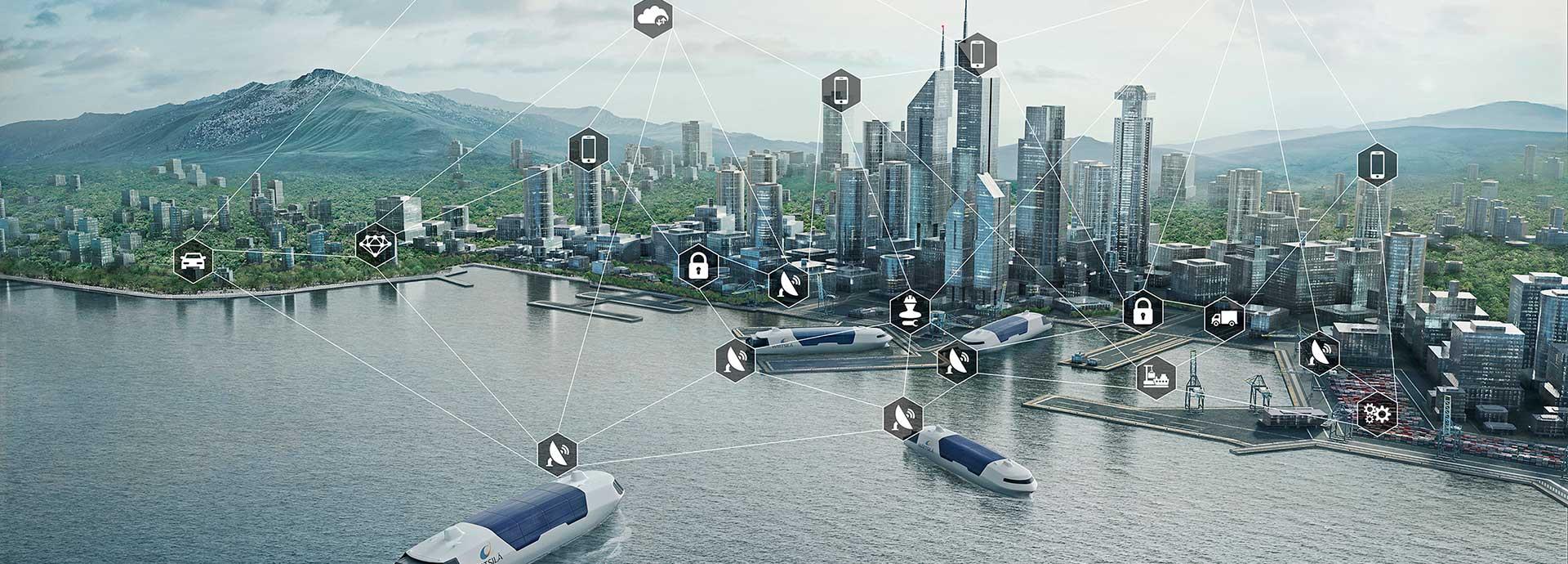

The marine industry is figuring out ways in which digitalisation and smart technology can help them meet the challenges of modern cruise shipping. Wärtsilä’s new vision of the future – the Smart Marine Ecosystem shows effectively how this could look by utilising connectivity, knowledge sharing and partnership.
The past couple of years have undoubtedly been a challenge for the marine industry, with overcapacity, low prices and bankruptcies dominating headlines. But the situation is finally starting to turn around, with the Moody’s investor service stating that the outlook for the global shipping industry is stable.
“Signs of recovery, although slow and choppy, in the dry bulk and containership segments drive the overall stable outlook, and although market conditions are still weak, they are unlikely to worsen from 2016 levels,” said Mariko Semetko, Vice President and Senior Credit Officer at Moody’s, in May this year.
This comes as a sign of hope for the beleaguered sector, which has been scrambling to cut costs and restructure its organisations to get growth back on track. And driving this growth is an increasing focus on digitalisation to improve efficiencies.
Bigger ships to better ecosystem
The focus of the marine industry today has moved on from building bigger ships to building a better ecosystem, one that can meet the unique needs and capitalize on the opportunities provided by the digital world.
“It is rare to see technology and opportunity coming together in a way that can positively disrupt the marine industry, but the time is ripe for that to happen,” declares Roger Holm, President of Wärtsilä Marine Solutions.
So, how is Wärtsilä going about doing this? Its new ‘Smart Marine’ vision, for instance, is focussed on leveraging its innovation capabilities across a broad value chain, while ensuring that its customers’ businesses benefit and expand as a result of its new solutions.
“We want to collaborate with our customers and build a smart ecosystem together with them,” says Pierpaolo Barbone, President – Services at Wärtsilä. “This ecosystem will help connect the dots and create value for them.”
A new vision for a new age
As part of this vision, the aim is to constantly look at improving the different pieces of the marine ecosystem puzzle. At the same time, the goal is to ensure that all these pieces are improvements by themselves which create overall value for the customer.
“We want to create value by optimizing the performances of our customers installations so that they can focus on their core business. Take cruise lines, for instance, where we will support them leaving the cruise operator free to look after the hospitality side of the business,” emphasizes Barbone.
“The future of the marine industry, as we envisage it, could soon see smart ships in smart fleet visiting smart ports, all of them connected to each other for optimal performance.”
“We already have the biggest product portfolio in the marine industry and by combining this with digital aspects, we can help our customers improve their businesses,” adds Holm. “The benefits will be two-fold. First, it will help reduce fuel costs and emissions, making shipping more environment-friendly. And second, it will use technology to support safer and more efficient operations of vessels.”
Cutting-edge tech in action
Examples of this technology are already being tested out. For instance, Wärtsilä recently remote controlled a ship from San Diego to Aberdeen – over 8000 kilometres away, putting it through a series of manoeuvres using its dynamic positioning system. On the services side, its engineers are experimenting with virtual glasses that will allow them to exchange visual information with the knowledge centre, enabling speedy resolution of problems. And there’s more.
“Bigger innovations are ongoing in order to build a platform also for the transactional business, an online marketplace, to provide punctual solutions and expertise for specific aspects of the lifecycle of the installations,” says Barbone.
Work on Wärtsilä’s Smart Marine Ecosystem has already begun, with the company determined to introduce it in a phased manner in collaboration with its partners. At the same time, the focus is also to improve existing solutions so that they are on par with the latest advances in technology.
“Our long history is filled with examples of how we have successfully disrupted the industry and so change is nothing new to us. This is why I feel this new strategy is both a big development and a continuation. We have done it before and we can do it again,” concludes Holm.



